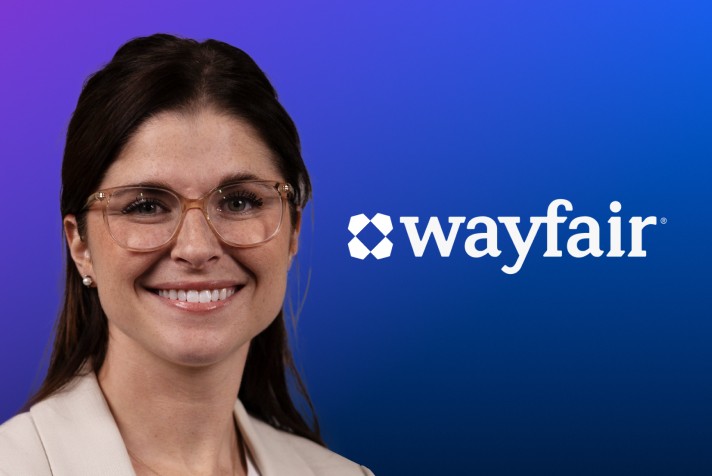Summary
One of the world’s largest home retailers was undergoing a period of intense growth, with its workforce projected to increase by 50 percent in the three years ahead. Coming off the back of a 400-percent increase in hiring demand the previous year, the talent acquisition team was staring at an almighty undertaking.
But when Wayfair looked at the mix-and-match of home-grown and third-party technologies at its disposal, it realized they were no longer up to the task. Their configuration and automation capabilities had been maxed out, yet recruiting demand was showing no signs of letting up. Recruiting teams were becoming overworked and candidate experience was suffering as a result. It was time to overhaul its technology.
After a rigorous RFP process, Wayfair chose Avature, and together they set out a 12-month implementation plan for a new ATS and CRM that would see workflows refined and 70 percent of the admin tasks that had been weighing down recruiters automated. The results speak for themselves, with Wayfair’s overall time to fill reduced by 72 percent and total open jobs down by 11 percent, even as hiring demand has grown. What’s more, the experiences of both candidates and recruiters have been vastly improved.
As they look to the future, not only have the foundations of a more cohesive and efficient approach to talent acquisition been firmly set, but thanks to Avature’s infinite and intuitive configurability, the ceiling of what’s possible has now been raised.
About Wayfair
Founded in 2002, Wayfair has grown to become one of the world’s largest shopping platforms for home goods, serving over 22 million active customers and working with more than 20,000 suppliers.
With operations throughout North America and Western Europe, Wayfair is powered by over 13,000 employees and receives close to a million applications per year.
The Challenge: Overworked Recruiters and Underperforming Technology
Prior to partnering with Avature, home retail platform Wayfair had been experiencing the sort of efficiency issues around talent acquisition that often plague rapid-growth companies. After seeing a 400-percent jump in headcount during the previous 12 months and with another 50 percent increase projected for the three years to come, it was becoming evident that the muddle of homegrown and third-party tools that made up its tech stack was straining to meet the company’s needs.
Although corporate hiring wasn’t at crisis point, with Wayfair having exhausted all efficiency gains made through automation, recruiters were now being shunted from pillar to post to meet demand. With an ATS that relied on overworked TA teams to update case status manually, jobs were too often closed with unsuccessful candidates left on step, essentially ghosted by the company.
As Hannah Rebecchi, Senior Manager of Talent Acquisition Technology at Wayfair, explains, “It felt like we were patching holes on a boat.”
However, the decision to soldier on as before or rein in a sprawling tech stack wasn’t as clear-cut as it seemed.
It’s really hard not to fall into that really reactive mode and say that ‘we have the technology we have, we know how to use it, we’ll operate scrappy. Because going through this huge transformation and the change management that comes along with it seems like a very daunting process.”
Hannah Rebecchi
Senior Manager of Talent Acquisition Technology at Wayfair
The alternative, however, was no more appealing. When Wayfair crunched the numbers, it found that for its TA team to meet the growing demand, it would require an extra 100 recruiters for the next three years, all making do with strategy and a tech solution that was really no solution at all. It was time to take the bull by the horns. A transformation was needed.
Finding Efficiency Savings Throughout the Funnel
Wayfair undertook a discovery exercise, speaking to end users, identifying pain points and putting together a picture of where it was and where it wanted to go. Buoyed by the possibilities now available, it soon became apparent that this was an opportunity to refine more than just the technology.
What really stood out with Avature was the integrated platforms, the customization and the level of support we got from the implementation team and also the account management team.”
Hannah Rebecchi
Senior Manager of Talent Acquisition Technology at Wayfair
With Avature, Wayfair looked at how it could refine its talent acquisition journey at the top, middle and bottom of the funnel and take the pressure off of recruiters by allowing the candidate to drive much of the process. With our partnership aligned on what was needed, a 12-month implementation plan was established and work got underway to automate the repetitive administrative tasks that were creating bottlenecks for the TA teams.
We hired recruiters to engage top talent and really get people excited to work at Wayfair. So we wanted to be able to utilize automation so they could move away from those administrative tasks and focus on what we hired them to do.”
Hannah Rebecchi
Senior Manager of Talent Acquisition Technology at Wayfair
At the top of the funnel, where Wayfair receives and qualifies applications, Avature:
- Introduced a multiple openings functionality to reduce unnecessary repetition of tasks.
- Employed knockout questions to automate the qualification of candidates, notifying unsuccessful candidates and inviting successful candidates to participate in third-party assessments.
- Automated the scoring of third-party assessments and moving of candidates onto the relevant next steps, with the necessary communications sent automatically.
- Filtered out candidates who were inactive for more than 14 days.
At the middle of the funnel, from the interview to the offer, Avature was leveraged to:
- Automate the scheduling of all interviews.
- Send automatic reminders if candidates haven’t responded after a set number of days.
- Configure the recruiting interview rosters for maximum efficiency.
At the bottom of the funnel, from the offer to hire, Avature:
- Added more granularity to the tracking of the background check stages (invited, initiated, in review, completed, notified), with third-party vendors far better integrated.
- Made the candidate responsible for advancing through the steps, such as signing and attaching all documentation.
- Automatically moved silver medallists into job pipelines for future openings and automated communications to unsuccessful candidates once jobs were closed.
- Automated the changing of the person record to employee, the shipping of equipment and the creation of employee IDs upon candidates arriving at the hired step.
By the end of this stage of the transformation, they had automated over 70 percent of the talent acquisition workflow, liberating recruiters of a crippling administrative burden and enabling them to have the kind of conversations with candidates and hiring managers that add real value.
The Results
While it’s natural to expect a dip in productivity as TA teams get to grips with a fresh digital transformation, this has not been the case with Wayfair. By transitioning to a candidate-driven process, the company had little trouble hitting its first peak hiring season goals.
The introduction of pre-screen knockout questions and automated scoring of third-party assessments led to the removal of one-third of applicants who didn’t meet the role’s base requirements. When dealing with the volumes that Wayfair’s TA team was, that’s a total of 100,000 fewer screenings to perform. Meanwhile, the automated weeding out of applicants who had been inactive after 14 days removed another 35 percent from the process.
Together, these improvements shored up data integrity and helped to decrease time in the application review stage from 17 days to just two, an 88 percent reduction.
Equally impressive results were seen when scheduling the TA screen interview. Avature’s automated reminders were sent to nudge unresponsive candidates, with 32 percent of candidates prompted to schedule their interview as a direct result. Thanks to this automation and the efficient configuring of interview rosters, the average time to schedule screening interviews was reduced from 18 to 6 days, with a better candidate experience to boot.
Automation has enhanced our candidate experience because we’ve enabled a more candidate-driven process. So no more waiting on the recruiter to move a candidate forward. The candidate actually dictates how quickly they move forward in the process.”
Hannah Rebecchi
Senior Manager of Talent Acquisition Technology at Wayfair
Since transitioning to Avature, Wayfair has seen overall time to fill reduced by 72 percent and total jobs open down by 11 percent despite hiring demand continuing to increase as projected. Had it continued to make do with the tech it had and not chosen to embrace the vast opportunities offered by a digital transformation, this remarkable achievement would have been unthinkable.
Avature made it possible to scale hiring without necessarily having to continue to scale our hiring teams.”
Hannah Rebecchi
Senior Manager of Talent Acquisition Technology at Wayfair
Looking to the Future
Every day, Wayfair is discovering new ways to leverage Avature to further refine its talent acquisition processes. These include better utilizing the Google calendar integration and optimizing interview scheduling to create buffer times that put recruiters’ quality of life on par with business needs.
With the new ATS running smoothly and recruiters freed up to do what they do best, Wayfair is now ready to take a more proactive approach to hiring.
We’re really excited for recruiters to get more hands-on with the CRM functionality and to reengage with re-hires and passive talent.”
Hannah Rebecchi
Senior Manager of Talent Acquisition Technology at Wayfair
Spurred on by its success, Wayfair continues to embrace new challenges it is now better equipped to meet, from improving visibility across recruiting teams and identifying efficiencies around job openings to taking advantage of training opportunities for end users.
The company has already made significant progress since beginning its collaboration with Avature. With an ambitious roadmap established and the vehicle performing smoothly, it’s now only a question of how far Wayfair wants to go.


